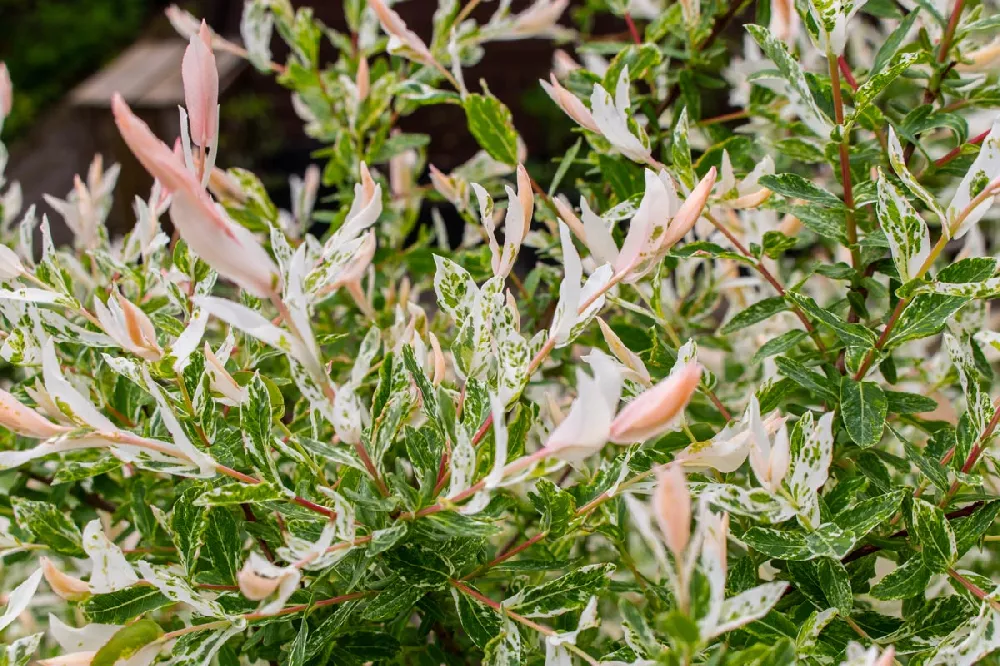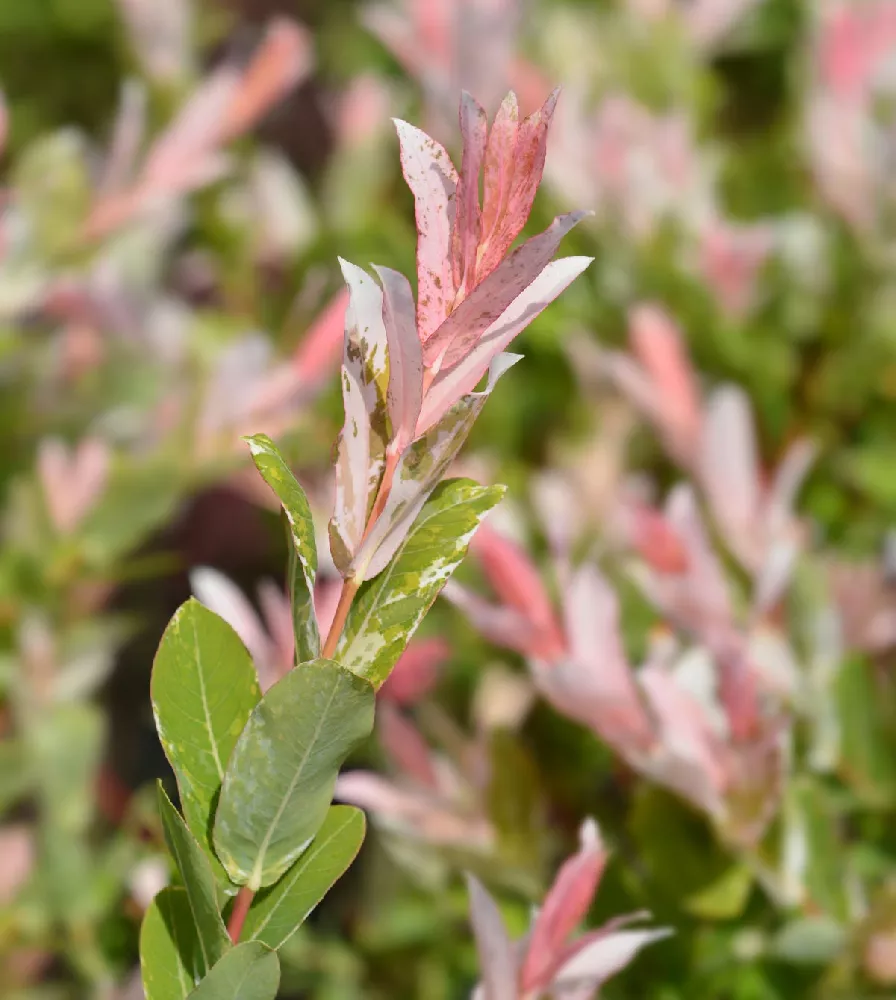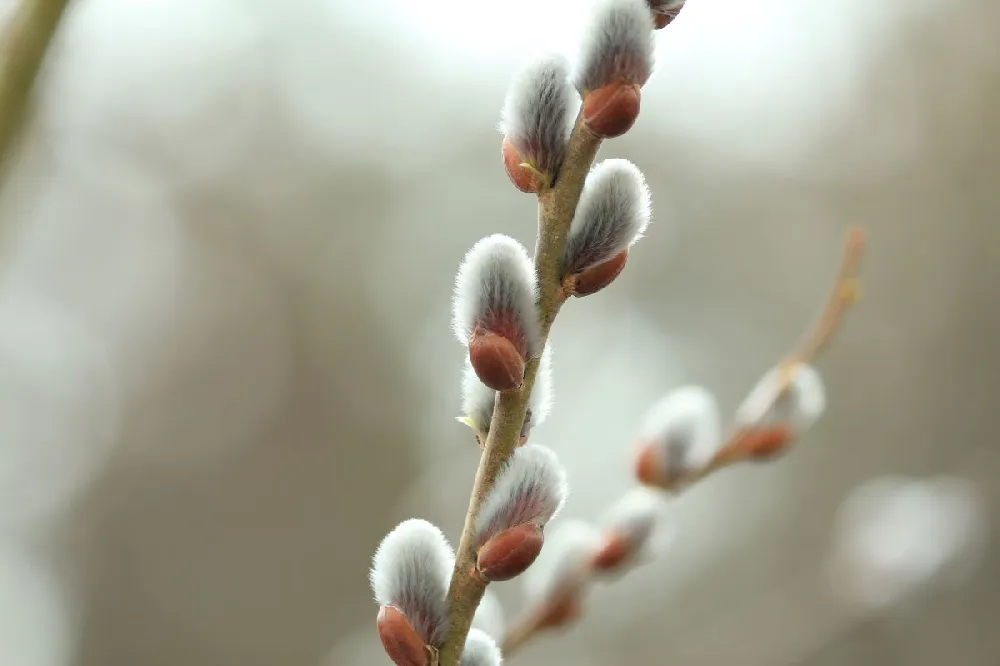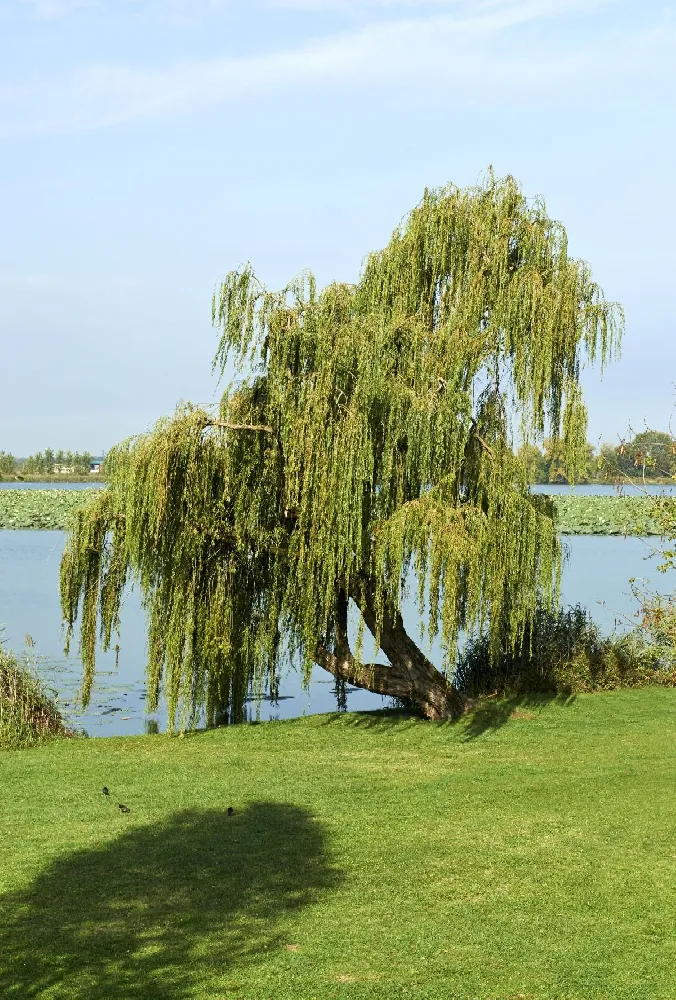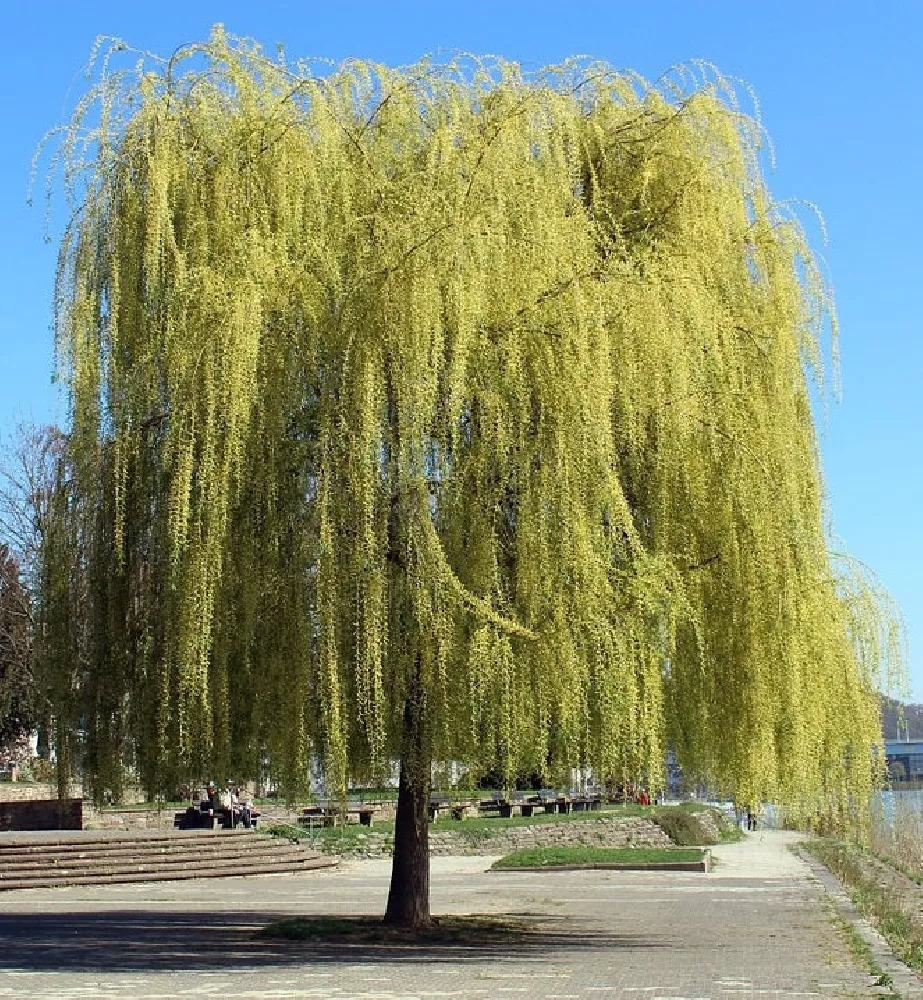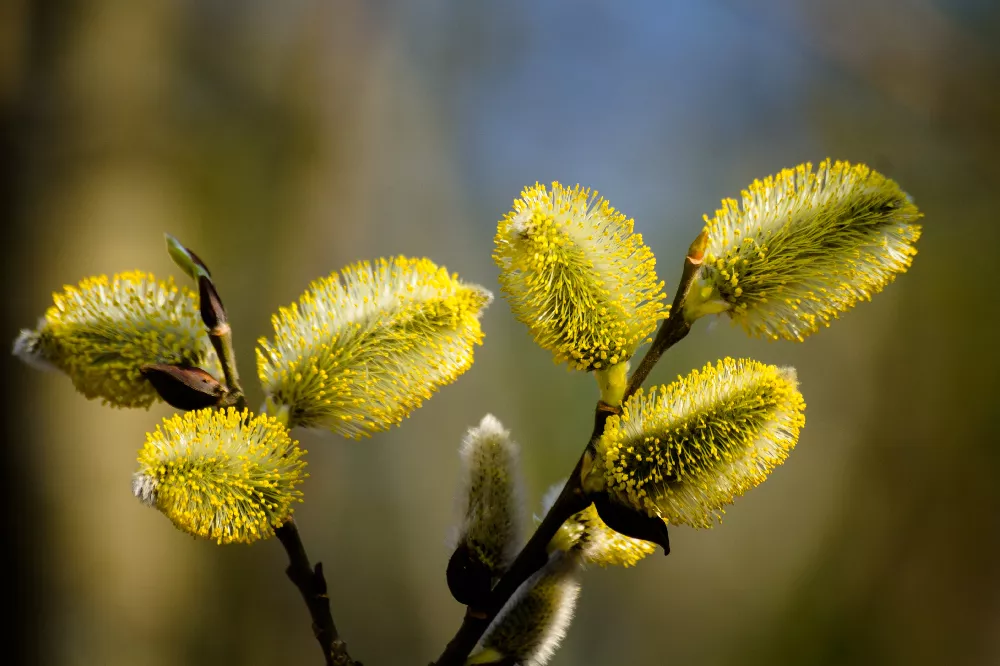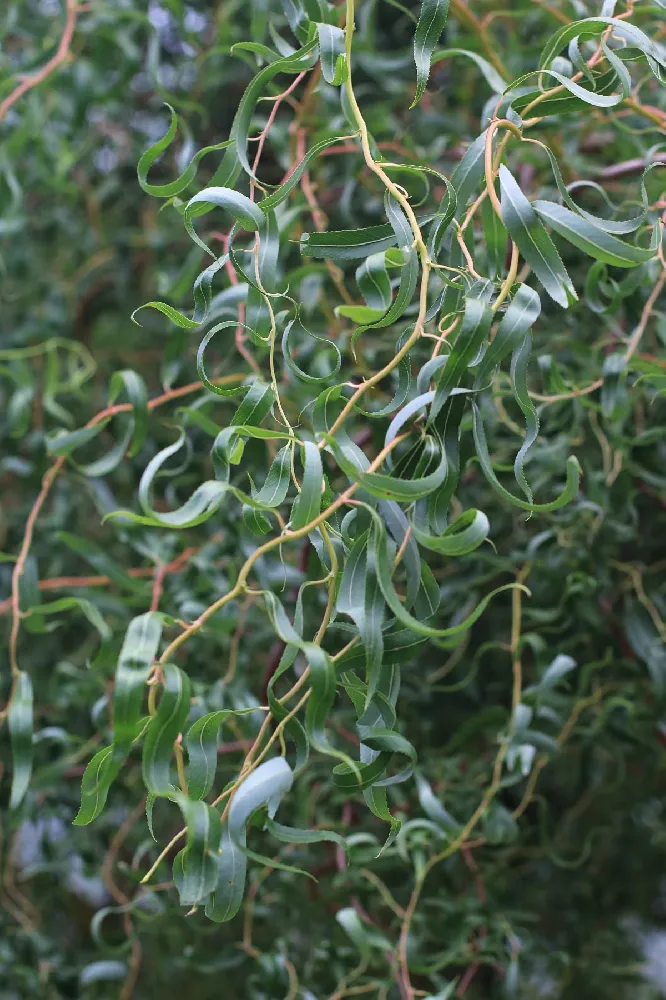Tri Color Willow for Sale - Buying & Growing Guide
- Ships in 1-2 days
- 1-Year Warranty Eligible
- Pots or accessories are not included unless specified in the product options.
Shipping Details:
Once your order is shipped, you’ll receive an email with a tracking number and estimated delivery date. Most orders ship immediately, but some items are seasonal and may only ship in spring or fall. These products are noted on the website.
The tri-color willow, Salix integra 'Hakura Nishiki,' is a symphony of color that comes in a small package designed to fit in gardens both small and large. Also known as the dappled willow, this tree features a show every spring, when new growth appears on creamy-white and green leaves, which then turn pink before settling into a bright green. In fall, the leaves turn yellow, and in winter, you will be rewarded with bright coral red stems — making this truly a four-season tree. Easy to grow and care for, the tri-color willow isn't picky about soil type, is deer-resistant, and needs only an occasional watering to thrive. Here are a few more reasons why you need a tri-color willow tree:
- This willow is a great choice for cottage gardens and smaller city yards.
- It grows well along streams or ponds, thriving in the constantly moist soil.
- The tri-color willow tree is a quick grower, achieving its full height of 8 to 10 feet in a decade if it’s well-sited.
Plant Care
Sunlight

The tri-color willow tree thrives in partial to full sun, with four or more hours of direct light a day.
Watering
The tri-color willow tree likes moist soil; water it regularly when soil is dry 2 inches below the surface.
Fertilizing

Apply a slow-release, balanced fertilizer, such as a 10-10-10 formula, in spring before bud break.
Planting and Care
Planting instructions
Site your tri-color willow tree where it will receive at least four hours of sun a day, in soil that drains well. The tri-color willow likes moist soil, but not standing water at its roots. Unpot the sapling, teasing out any encircling roots, which can girdle the tree and kill it eventually. Dig a hole that’s slightly deeper than the root ball and twice as wide. Throw in a few handfuls of well-rotted manure or compost and place the tree on top. While holding it upright and steady, fill in around the roots with good-quality topsoil, tamping down as you go to eliminate air pockets. Water thoroughly. Apply a 2- to 3-inch layer of an organic mulch, such as bark chips, around the root zone, being careful to not touch the trunk, to conserve moisture and hinder weeds.
Watering and nutrients
Water at the base of the tree several times a week when newly planted. Once you see robust new growth starting to appear, you can cut back to a once-a-week watering. When the tree is established, you can check whether it needs watering by seeing if the soil 2 inches down is dry. If so, give it some water. Fertilize in spring with a slow-release, balanced fertilizer. Do so before new growth appears in late spring.
Pollination
Willows bloom in early spring, producing flower clusters, or catkins, which are attractive to insects who then do the work of pollination. Willows are also easily able to reproduce asexually — if a branch touches the ground, it may develop roots and eventually break off from the main tree.
Pruning
Prune out dead, diseased, or damaged branches whenever you see them throughout the year. If you wish to prune for shape, do so in early spring before bud break. Pruning will encourage new growth, which will lead to more color. You may also thin out the canopy, if you wish, to encourage the circulation of air and light within the plant’s structure.
Pests, diseases, and animals
Willows are sturdy trees, and, if they are happy in their location, they can easily fend off minor infestations of pests. Keep an eye out for aphids, leaf beetles, and caterpillars, and fight them with beneficial insects such as ladybugs or, as a last resort, insecticides. Diseases of the willow include anthracnose and rust, although neither of these is common.
Achieving maximum results
Willows are water-loving plants, and it’s not uncommon to see an immense weeping willow sweeping down over a riverbank, branches trailing in the water. It’s good to keep that in mind when you plant a tri-color willow. If you happen to have a natural or man-made water feature on your property, consider planting a grouping of these small trees near the shoreline. Wherever you plant your willow, however, it will thrive if you keep it in moist environs. This doesn’t mean it wants to be standing in a puddle—there are few plants that do well in standing water. But you can help your willow to stay healthy and grow by giving it a good watering once a week or so. Also consider adding a thick layer of mulch around the tree’s dripline. This can help hold moisture in the soil so that your tree thrives.
FAQs
What regions does the tri-color willow grow best in?
Tri-color willow trees can grow in USDA hardiness zones 5 through 9. That covers much of the continental U.S, from the Pacific Northwest through the southern states and up into most of New England. If you're on the northern end of its range, you can try growing your willow in a protected spot, sheltered by your home or another building or structure, and wrap the trunk in burlap for the winter.
What are some good ways to use a tri-color willow tree in a landscape?
The tri-color willow tree works in both formal and informal garden settings. It can serve as an informal privacy screen or windbreak if several are planted roughly 6 feet apart. Its petite size makes it a great choice for smaller gardens or urban lots, and it excels when planted alongside a body of water. It is also easily adapted to Asian and rock garden settings or as a specimen tree in a cottage garden.
Is the tri-color willow a tree or a bush?
It can serve as either, and the way you prune it will impact its final shape. It is often grown as a small tree with a single trunk. Many gardeners give it a hard pruning, because the new growth that results is where the most intense color is. It can be pruned into a more bush-like shape, leaving lower branches in place and allowing the plant to assume a more bushy, full appearance.
Compare Similar Products
Customer Reviews
 Roots Bound in Pot
Roots Bound in PotArrived timely and in good shape from FedEx. The foliage looks good. I am concerned about how root bound the plants are (bought 10) and whether they will grow. I hope that they will thrive and I'll update in a few months . . . with good news.
 Second time around was great!
Second time around was great!This time around the plants arrived alive and looking great. Thank you!
 Gift
GiftThis was a gift for a friend. She was very pleased . The tree came well packed and both of us were surprised as to the size. It made her day !
 Dappled Willow
Dappled WillowEverything about this purchase was absolutely perfect! Thank you so much Mona Lavoie
 Beautiful Plant
Beautiful PlantThis is a very beautiful shrub and I look forward to watching it grow... I was also impressed with the care of shipping my order to me...
 Shipping was delayed
Shipping was delayedGreat plants but FedEx misplaced 3 boxes and it arrived partially damaged but we planted them right away and after 2 weeks they are recovering well.
 Well done.
Well done.Good communication regarding shopping. Very good care of packing and shipping. Very nice, healthy plant arrives quickly. Well done.
 Superior
SuperiorThe shrubs were very well packaged and very healthy growth.
You can't add more Product Name - Product size to the cart.
OK